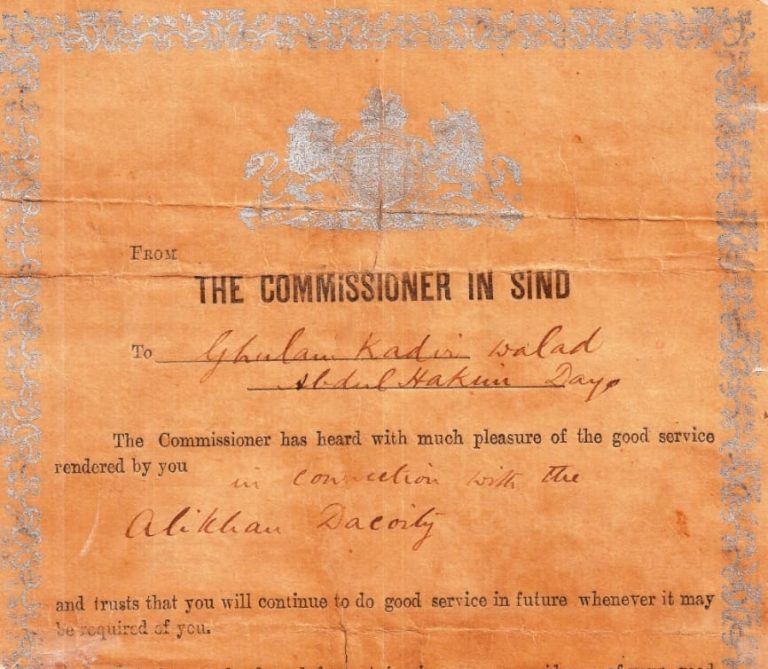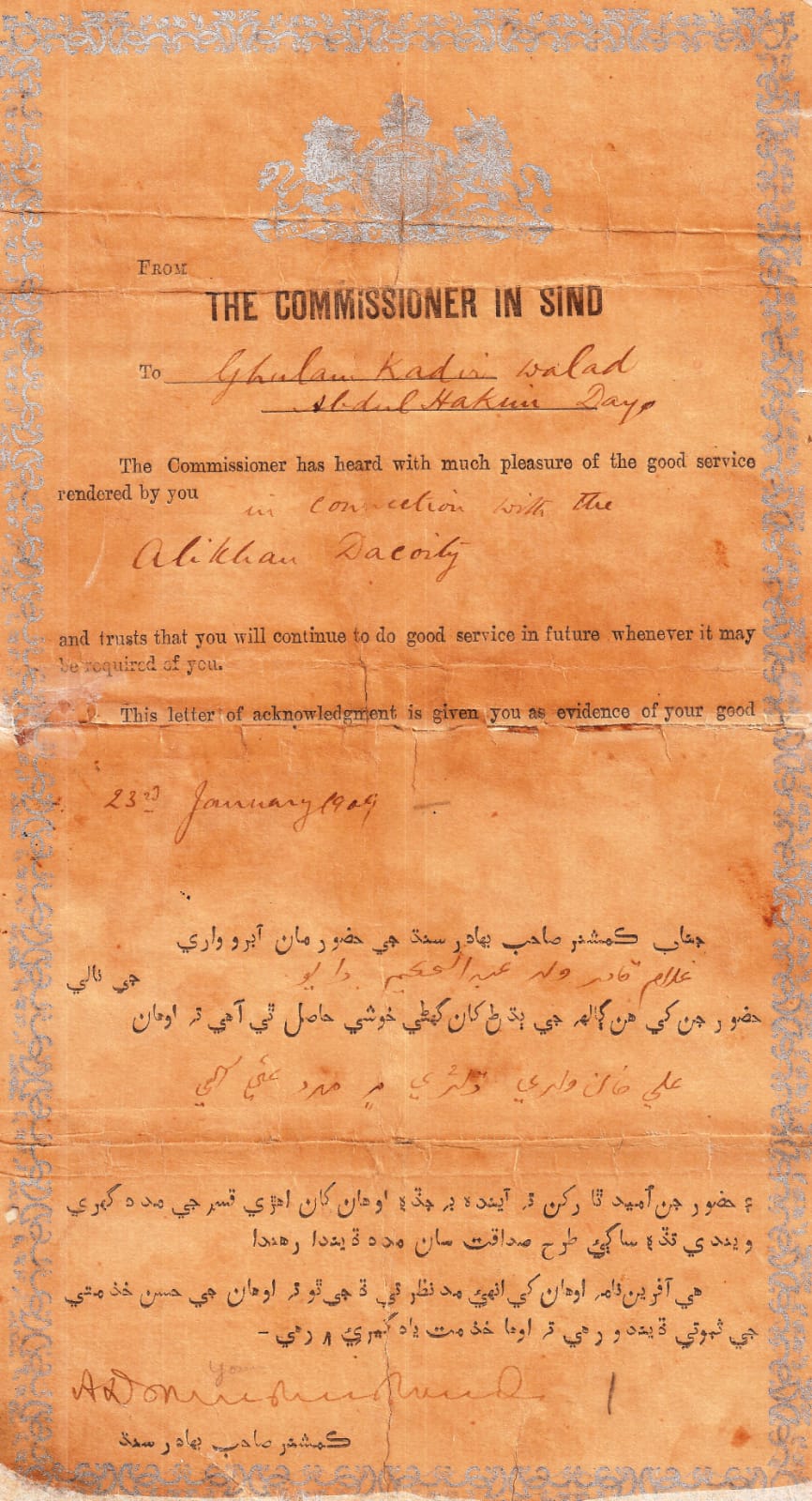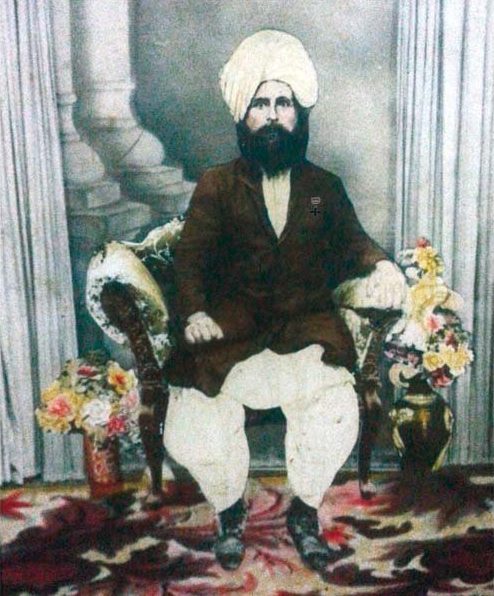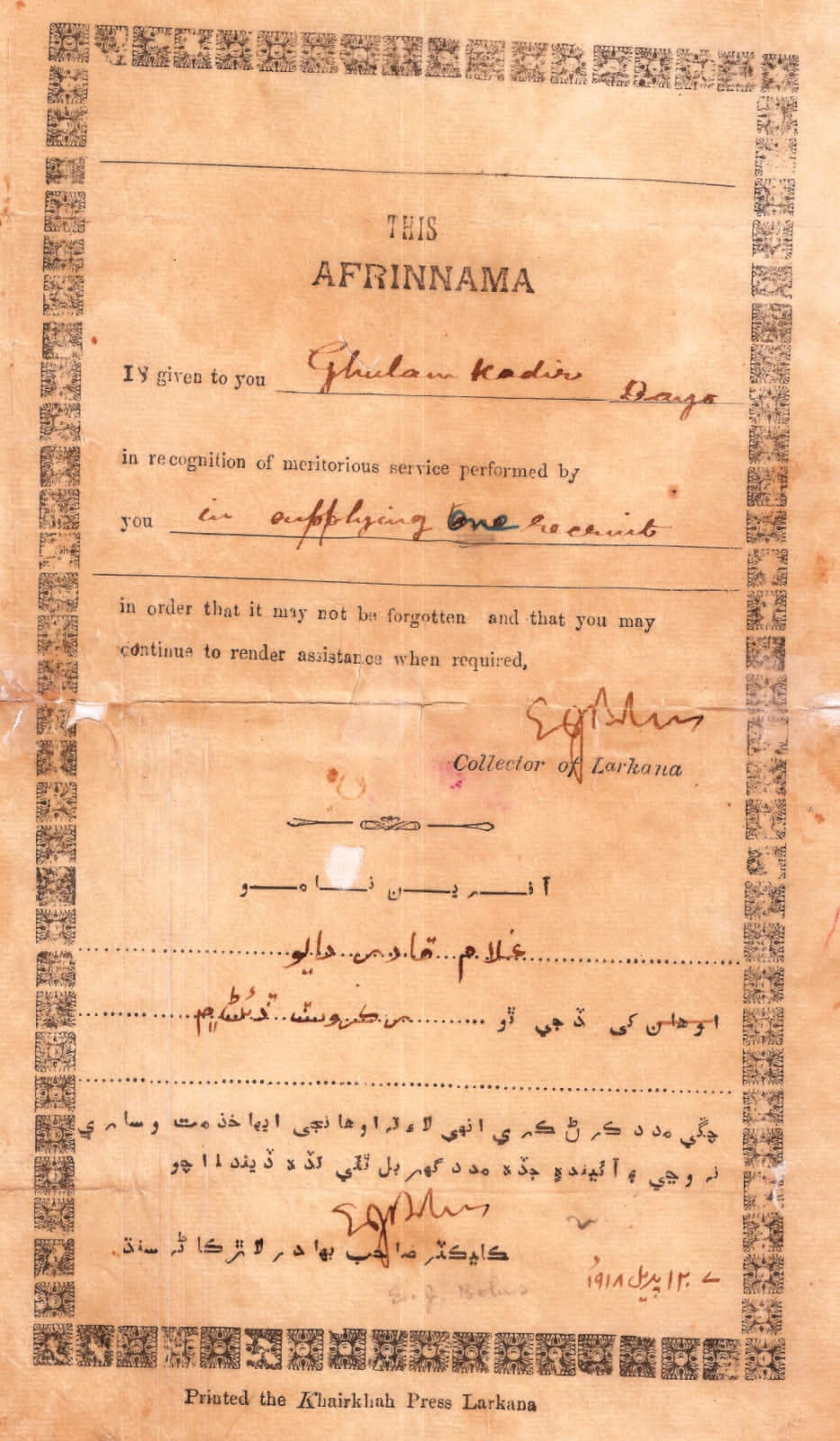
The original ‘Blue Book’ of British era is missing and a photo copy of tampered and hand-written record of is available at Sindh Archives. Yet another photo copy with further alterations is placed in Sindhology.
By Col. ® Hassan Imam
The Invasion of British Army, under Charles Napier in 1843, brought philosophical changes in Sindh. Military rule of Napoleonic doctrine gave birth to new baby with new tag “The British Colonial Sindh”. Sindh now is entirely changed; a different Sindh from its ancient past.
Urbanization and rural powers were growing identically. After almost seven years of military rule Sindh was handed over to civil bureaucracy. Sindh became division under Bombay presidency and was no more an autonomous State. Sindh was merged under governor’s rule and placed under direct rule of commissioner till 1937. This kind of rule was a little aggressive and submissive too. Sindh was given status of administrative district under commissioner at Karachi. Sindhi was made official language and the records of property, land, individuals and populations were updated.

After Commissioner, the collectors were the executive officer of the districts with magistrate powers. Each collector was duty bound and responsible to write the profile of the district and the individuals, influential peoples, landlords. This profile of all individuals was compiled and was known as “Blue Book”, a book personally maintained and written by the collectors, kept under personal custody.
I being a student of anthropology and military history was interested in the Blue Book of Larrkano. Some people make a significant mark in their time but are lost in the history due to neglect or deliberate erasures. My grandfather Wadero Ghulam Kadir was among the pioneer members of Bombay Council who helped in recovering famous Dacoities of Panjudero and Ali Khan Wasul during Colonial rule in 1902 and 1909. He was decorated with numerous “Afrin Namas” (Appreciation Letters) by the Commissioner in Sindh Mr. Arthur Delaval Young Husband in 1909 and Collector William Henry Lucas in 1902. Ratodero was the most desirable town for me since my elders were born and bred there. Zulfiqar Bhutto and Benazir also inherited the same place.
The Blue Book was written by collector himself and was confidential too. It was maintained in alphabetical order. It carried the content of personalities including the name and official title of the individuals, land, property holding, family back ground and his values characteristics.

Sir Shanawaz Bhutto has written and claimed in his memoir, “Whenever some new English officer will be posted to Larrkano, our rival land lords will brief them negatively about the Bhutto family”. This is also quoted by Stanley Wolpert in his book “Zulfi Bhutto of Pakistan”. While searching the record of Ratodero and influential landlords from 1902 tom 1927 I tried my best to reach the Blue Book and finally I found the blue book in Sindh Archives. It was a photocopy of the record and besides, there was another book known as “Kursi bardar”, Chair holder’s register record. Before 1920, when Sindh was given share in legislation, there was no member of legislation but chair holders and Kursi Nashin. Their status was notified officially and letters were issued in writing by commissioner and collector formally. Lastly I found a photocopy of the book in the Sindh archive and witnessed that the record of 25 years were torn apart and missing. While replying my questions the officials said, “This is what we have. We do not know where the original one is?” While examining the book I found that the same record is re-written with the same hand writing from 1927 to 1936. The interested party has done it very deliberately and intelligently destroyed the original papers and re-written the picture according to their wishes and will. They have given a fabricated picture of past. It looks as if the same person has written the content on orders of some influential authority. In all the cases the victim is Ratodero and the landlords of Ratodero from 1902 to 1926.

Moreover I also found another fraud as the Sindhology department also has a photo copy of the same, but with different hand writings, same dates, same districts but different signatures of collectors. The Sindhology record is also incomplete, torn apart and destroyed. The record of Sindhology is different from the Sindh archives department. The history of British Sindh is our near past and we have failed to save the nearest past. The interested party has not only destroyed the history but also ensured tempering by re-writing, targeting opponents and rivals by designing fabricated picture of the past hiding the truth and reality of colonial rule.
For example, there are varying accounts of who founded and established Ratodero in the middle of the 17th Century. Bhuttos credit their ancestor Sheto Khan and Wolpert confirms this fact. However, the Imperial Gazetteer of India (V.21) states that Ratodero was formerly an encampment of a chief of the Jalbani tribe named Rato. The record of colonial Sindh should be made available to research fellows, journalists, and students so that they must see the reality of our past. It does not carry any confidential element now. In London the oriental India office collection and other archive departments have given access to the public.
[author title=”Col. (R) Hassan Imam” image=”https://sindhcourier.com/wp-content/uploads/2021/02/Col.-Hassan-Imam.jpg”]Col. Hassan Imam, hailing from Ratodero, Sindh is based in Karachi after retirement from Pakistan Army. Besides serving in different regions of country, he spent many years in Inter Services Public Relations (ISPR) in Karachi. He also had been part of UN Peacekeeping Force in African countries. This article was first published in The Nation in 2015. Sindh Courier has republished it with writer’s permission who also shared photos. [/author]